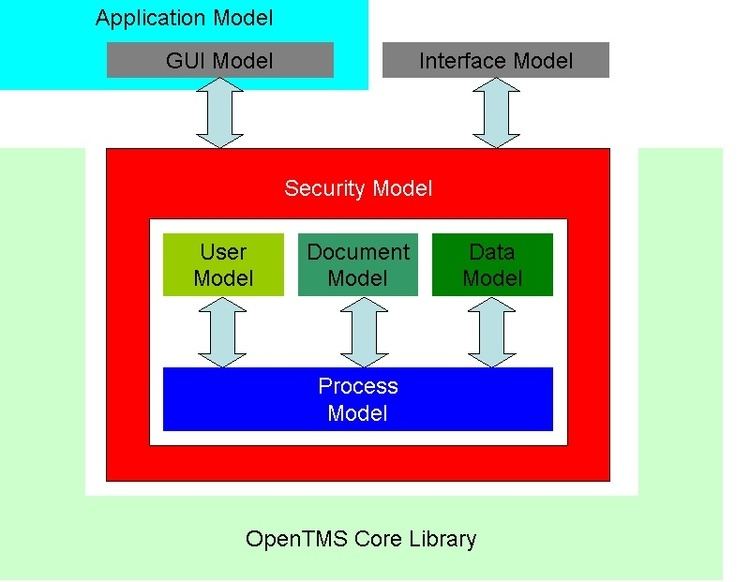Original author(s) | Initial release November 10, 2008 | |
 | ||
Developer(s) Klemens Waldhör, Rainer Kemmler Stable release 0.9.1 / July 9, 2009 (2009-07-09) Repository sourceforge.net/p/open-tms/code/HEAD/tree/ | ||
openTMS is an Acronym for "Open Source Translation Management System".
Contents
Goals
openTMS is a free, open source, translation memory system based entirely on open-source standards (for an explanation/definition of translation memories, see Wikipedia). The system relies heavily on XLIFF, TMX (Translation Memory eXchange), TBX (Termbase Exchange format) and accompanying standards to ensure a free and unencumbered exchange of translation and localization data. openTMS implements a standard translation workflow, but features a very fine-grained modularity that makes its adaptable to any conceivable workflow design.
Software Architecture
The architecture of openTMS is mainly based on several models. These models describe the key components of openTMS. Each model handles a specific aspect of the translation process and its requirements. The models form a framework which guide the construction of language specific software tools.
The following core models are identified:
On top of those models the application model organises real applications (like the GUI model). openTMS uses a data source in the data model which organises the access to databases or any other kind of devices which allows to store (TM, terminology, even machine translation) data. Currently the following data sources are supported: TMX files, XLIFF file, SQL databases. Data sources have to implement a set of methods based on the data source interface.
openTMS can be accesses as directly through Java or through an XML-RPC server.
The architecture description can be found here: [openTMS Architecture http://www.folt.org/index.php?option=com_docman&task=doc_download&gid=55&Itemid=39]
Citation: Waldhör, K., 2008. OPENTMS SOFTWARE ARCHITECTURE, Roßtal, 29 August 2008.
History
openTMS was initiated by the Forum Open Language Tools (FOLT) is a forum and working group of service providers in the field of translation and documentation. Basic objectives of FOLT are the support of standardised exchange formats, non-proprietary software and trialling new translation technologies and methods. We are concerned with the overall workflow of multi-lingual documentation. From generation of the original text to production of texts in the target languages, highlighting any defects or lack of standards in the processes.
Software Requirements
openTMS is implemented in Java. It requires Java >=1.5 (Linux, Mac OS X, Microsoft Windows). openTMS uses the EPL (Eclipse Public License) license.
Releases
openTMS is hosted as a sourceforge project here: [openTMS on sourceforge http://sourceforge.net/projects/open-tms]
There are several downloads available:
- A VM for Sun VirtualBox is hosted here: [openTMS http://www.opentms.de/?q=node/29]. This download also contains a php based Web Graphical user interface.
- A Windows installer (containing the XML-RPC server) is hosted here: [openTMS Windows Installer http://www.heartsome.de/arayatest/opentmsserver.exe]
- A version integrated in the Araya XLIFF Editor can be found here: [Araya XLIFF Editor with openTMS plugin Windows Installer http://www.heartsome.de/en/freearaya.php]
